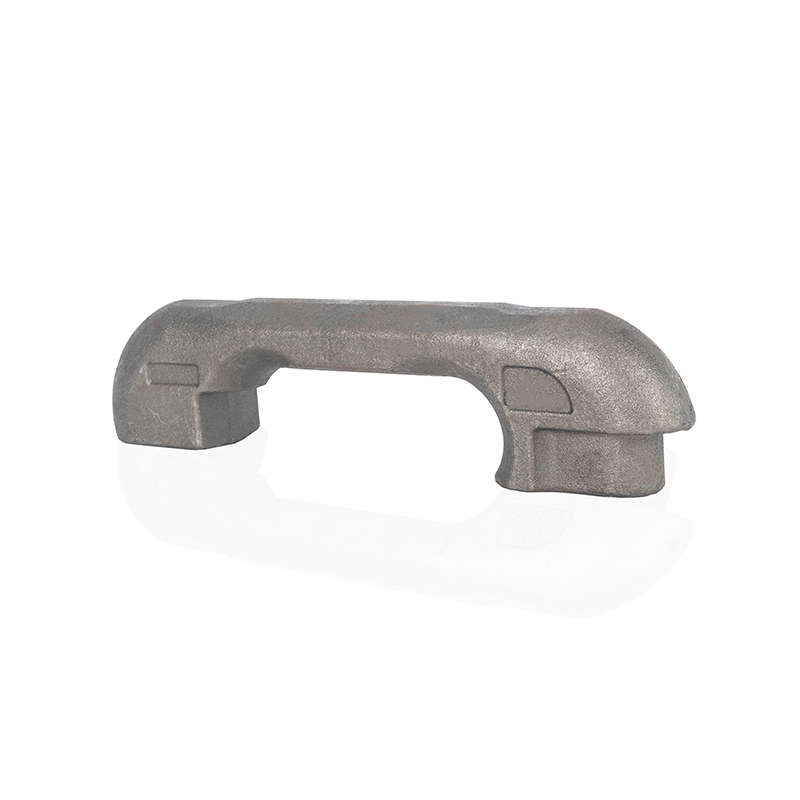Mastering Heat Treatment: Enhancing the Strength and Durability of Engineering Machinery Forgings
 2025.04.07
2025.04.07
 Industry news
Industry news
Engineering machinery forgings are critical components in the manufacturing of robust industrial equipment. Whether it’s heavy machinery used in construction or intricate components found in high-performance engines, these forgings must meet stringent demands for strength, toughness, and wear resistance. One of the most influential factors in achieving these properties is the heat treatment process. In this article, we’ll explore the role of heat treatment in engineering machinery forgings, its impact on performance, and how it can be optimized to produce parts that perform at their best under extreme conditions.
The Importance of Heat Treatment in Engineering Machinery Forgings
Heat treatment is a crucial step in the manufacturing of engineering machinery forgings, as it significantly enhances the mechanical properties of the material. Engineering machinery forgings often undergo heat treatment processes such as quenching, tempering, annealing, and normalizing. These processes alter the internal structure of the material at a microscopic level, improving its strength, hardness, and resistance to wear.
By carefully controlling the heating and cooling rates, manufacturers can tailor the material's properties to meet specific performance requirements. For example, high-strength parts that are subjected to heavy loads and repetitive stress, such as gears, shafts, and axle components, benefit from the controlled modification of their microstructure to increase toughness and fatigue resistance.
How Heat Treatment Affects the Mechanical Properties of Engineering Machinery Forgings
The goal of heat treatment is to achieve a balance between strength and ductility, as well as resistance to wear and fatigue. In the context of engineering machinery forgings, this is particularly important for components that will experience high-stress conditions.
Quenching and Tempering: Boosting Hardness and Toughness
One of the most commonly used heat treatment processes for engineering machinery forgings is quenching and tempering. Quenching involves heating the material to a high temperature and then rapidly cooling it, usually in oil or water. This process hardens the material but also makes it brittle. To mitigate brittleness and restore some ductility, the material is then tempered by reheating it to a lower temperature. This process helps in improving toughness while retaining the desired hardness, making the forged components suitable for high-load applications, such as heavy machinery parts and automotive components.

Annealing: Reducing Internal Stresses and Improving Ductility
Another important heat treatment process is annealing, which involves heating the material to a specific temperature and then slowly cooling it. This process reduces internal stresses caused by previous manufacturing steps, improves the material’s ductility, and enhances machinability. Annealing is particularly useful for engineering machinery forgings that need to undergo additional machining or shaping after forging, ensuring that they maintain dimensional accuracy and are less prone to cracking.
Normalizing: Enhancing Uniformity and Strength
Normalizing is a heat treatment process that helps refine the grain structure of the material, making it more uniform. The material is heated to a temperature above its critical range and then air-cooled. This process is commonly used for steel forgings to improve their mechanical properties, such as yield strength and toughness. Normalizing helps achieve a finer, more consistent grain structure, ensuring that engineering machinery forgings have the uniform strength needed to perform under challenging conditions.
Optimizing Heat Treatment for Engineering Machinery Forgings
For manufacturers, optimizing the heat treatment process is essential for maximizing the performance and durability of engineering machinery forgings. Factors like the composition of the material, the size and complexity of the forging, and the specific requirements of the end application all influence the heat treatment parameters.
Controlling Cooling Rates for Precise Properties
One of the most important aspects of heat treatment is controlling the cooling rates. Rapid cooling, as seen in quenching, can lead to the formation of hardened microstructures that increase strength but also make the material more brittle. Conversely, slow cooling, as in annealing, can improve ductility but may not provide the hardness needed for high-stress applications. By adjusting cooling rates, manufacturers can create forgings with the ideal combination of hardness, toughness, and resistance to wear.
Tailoring Heat Treatment to Specific Forging Applications
The heat treatment process must be tailored to meet the specific demands of the engineering machinery forgings in question. For example, components exposed to high temperatures, such as turbine blades or exhaust manifolds, may require heat treatments that improve their resistance to thermal fatigue and oxidation. In contrast, components exposed to heavy wear, like industrial gears, may benefit from heat treatments that enhance their wear resistance and tensile strength.





















